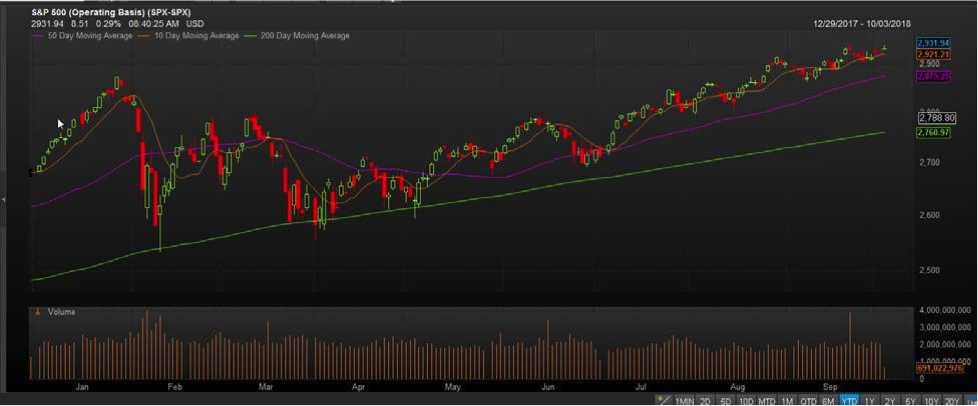Interpreting the Market
Over the last few weeks, the market continues to behave in a strong manner. In late August, the S&P 500 finally managed to eclipse its previous high level which was set last January. Since crossing this mark, it is also a positive beacon that the index has remained above the previous high. This is a propitious indicator for the market as we move into the final quarter of the year.
September marked six months in a row for S&P gains. This is reminiscent of last year. Since 1935, there have been only six previous occurrences when the market was up in each of those months, including last year. In each of these instances, the market gained in the fourth quarter with an average advance of 9.2%. For the quarter…amazing! This far exceeds the 1.9% average return for the fourth quarter through all years since 1928!
(Market data provided by Bespoke Investment Group www.bespokepremium.com)
The graph below shows the S&P 500 finally edging above its high in January and it also displays the steady progress over the past six months.

Hurdles for the market include the mid-term elections, another rate increase by the Federal Reserve, subpar worldwide economic conditions, and the continued brewing trade war with China. So far, these concerns are not knocking the market from its high perch and the market remains in a positive trend.
In July, you received my email about how meaningful it was to have a four-month gain for the market during the April to July period. This consistency is a bullish signal and it points to a strong year-end. So far, nothing has changed this view.
Interpreting a changing market is integral to our investment management. We would never rely on a forecast or a prediction. In rising markets, it is important to harness gains. There will be a time when the trend will change, however, and then it will be vital to employ different strategies.
I always keep an open mind with a careful lookout for signals that telegraph upcoming weakness in the markets. If necessary, precautionary measures can be taken that preserve account values at their high water mark. My general intent is that your account will carry a heavier weighting to equities during bullish phases and this weighting will be minimized prior to an extended market decline.
I often tell clients “if I knew then what I know now…..”
The analysis and scans that I deploy today would have averted much of the impact of past market declines. The latest was the bear market of late 2015 into early 2016 when the S&P fell almost 20%. Historically, significant bear markets exhibit the same characteristics months before gaining momentum. Being proactive when these indicators emerge can help investors retain profits from rising markets and avoid impactful damage when markets fall.
Peregrine Asset Advisers ● 9755 SW Barnes Rd. Suite 295 ● Portland Oregon 97225
503.459.4651 ● 800.278.1420 ● www.peregrineaa.com

